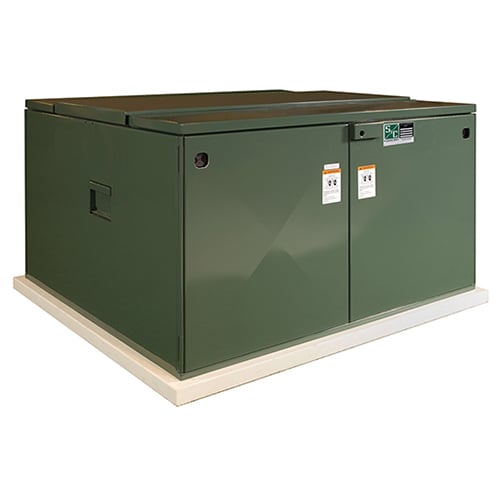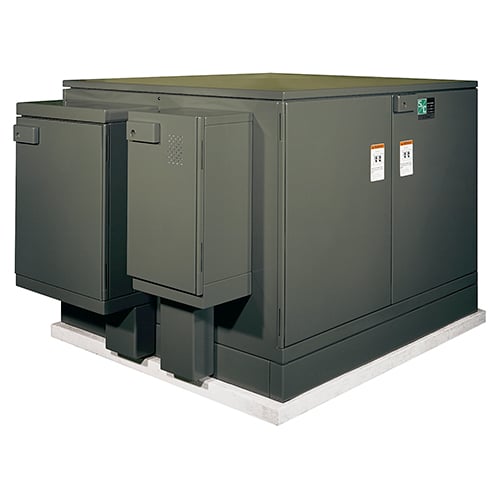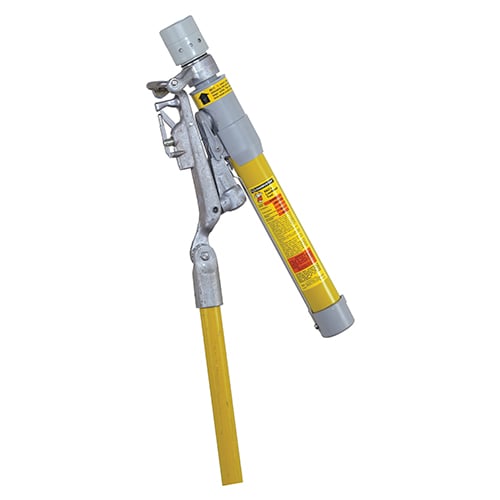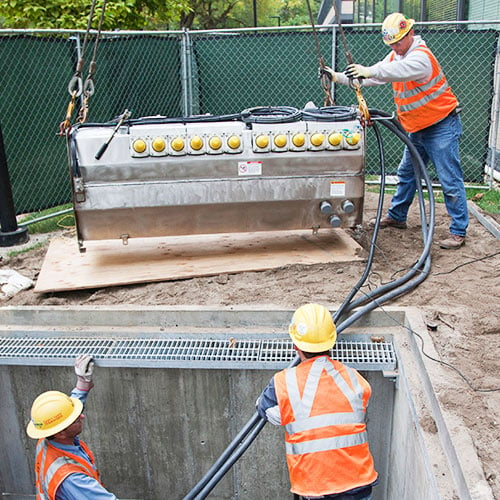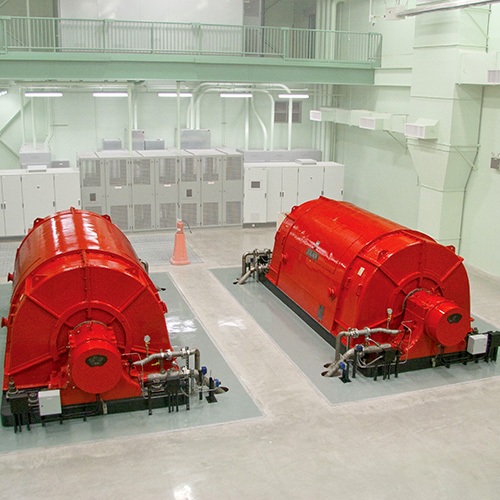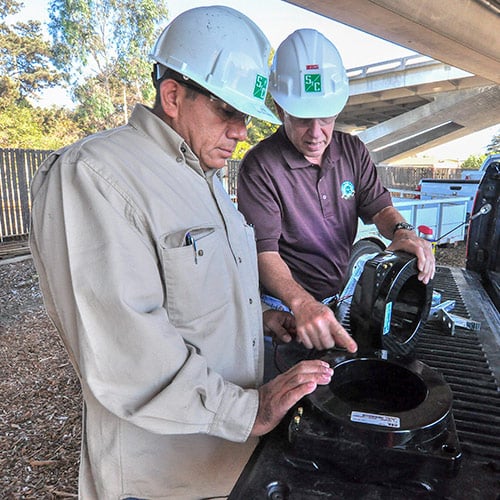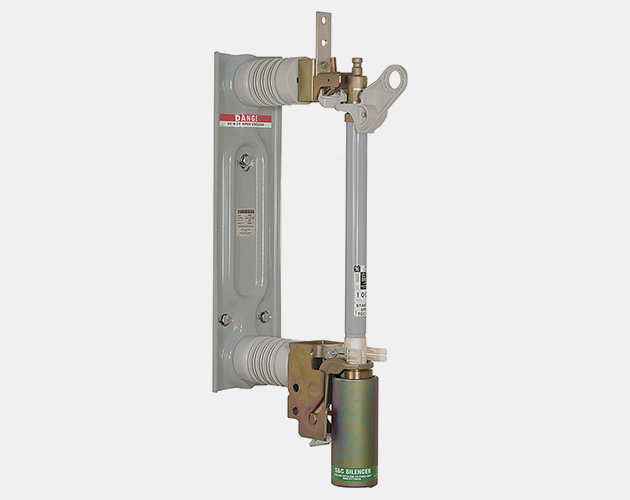
SM & SML Power Fuses
For indoor distribution, 4.16 kV through 34.5 kV
S&C SM and SML Power Fuses are the ideal protective devices for transformers and cables on utility, commercial, and institutional power systems
SM and SML Power Fuses are especially suited for protecting cables and medium-to-large power transformers on utility, as well as industrial, commercial, and institutional power systems through 34.5 kV. They incorporate precision-engineered nondamageable silver or nickel-chrome fusible elements with time-current characteristics that are precise and permanently accurate — assuring not only dependable performance, but also continued reliability of system coordination plans.
S&C’s SM and SML Power Fuses are manufactured in accordance with a quality system certified to ISO9001:2000.
With SM and SML Power Fuses, source-side devices may be set for faster operation than practical with other power fuses or circuit breakers, thereby providing better system protection without compromising coordination.
SM and SML Power Fuses are offered with maximum continuous current ratings of 200, 300, 400, and 720 amperes, in a variety of fault-interrupting ratings. They’re available in a wide variety of ampere ratings, in five different speeds: S&C “K”, Standard, Slow, Very Slow, and Coordinating. This broad selection of ampere ratings and speeds permits close fusing to achieve maximum protection and optimum coordination.
SML Power Fuses, further, include Uni-Rupter®, which provides 200-ampere single-pole live switching of single-phase and three-phase circuits on distribution systems through 25 kV. Uni-Rupter offers the ultimate in live-switching simplicity: a firm, steady opening pull on the fuse with a hookstick is all that is required for circuit interruption. Since circuit interruption is internal to Uni-Rupter, there’s no external arc or flame.
(On mobile, swipe left for remaining ratings information.)
| Fuse Type | kV | Amperes, RMS, Symmetrical | ||||
|---|---|---|---|---|---|---|
| Nominal | Maximum | BIL | Maximum | Interrupting | ||
| 60 Hz | 50 Hz | |||||
| SM-20 | 13.8 25 34.5 |
17.0 27 38 |
95 125 150 |
200E or 200K 200E or 200K 200E or 200K |
14 000 12 500 8 450 |
11 200 10 000 6 760 |
| SM-40 | 4.8 13.8 25 |
5.5 17.0 29 |
60 95 150 |
400E 400E 400E |
25 000 25 000 20 000 |
20 000 20 000 16 000 |
| SM-4Z | 4.8 13.8 25 34.5 |
5.5 17.0 27 38 |
60 95 150 200 |
200E 200E 200E 200E |
17 200 12 500 9 400 6 250 |
13 760 10 000 7 520 5 000 |
| SM-5S | 4.8 13.8 25 34.5 |
5.5 17.0 27 38 |
60 95 150 200 |
400E or 720E 400E or 720E 300E 300E |
27 000 25 000 20 000 17 500 |
27 000 25 000 20 000 17 500 |
| SM-5SS | 13.8 | 15.5 | 95 | 400E | 34 000 | 25 000 |
| Fuse Type | kV | Amperes, RMS, Symmetrical | |||||||
|---|---|---|---|---|---|---|---|---|---|
| Nominal | Maximum | BIL | Maximum | Live-Switching | Interrupting | Fault-Closing, Asym. | |||
| 60 Hz | 50 Hz | One-Time | Two-Time | ||||||
| SML-20 | 13.8 25 |
17.0 27 |
95 125 |
200E or 200K 200E or 200K |
200 200 |
14 000 12 500 |
11 200 10 000 |
22 400 20 000 |
13 000 13 000 |
| SML-40 | 13.8 25 |
17.0 27 |
95 125 |
200E 200E |
200 200 |
12 500 9 400 |
10 000 7 520 |
20 000 15 000 |
13 000 13 000 |
Fault Interruption
Fast, positive fault interruption of SM Refill Units and SMU Fuse Units is achieved through high-speed elongation of the arc in the solid-material-lined bore, and by the efficient deionizing action of gases generated through thermal reaction of the solid material due to the heat of the confined arc. Here’s how it works.
Fault Interruption of SM-4Z, SML-4Z, SM-5S, and SM-5SS Power Fuses:
- Overcurrent melts the silver fusible element. The strain wire severs, initiating arcing.
- Both main and auxiliary arcing rods are drawn upward by spring-and-cable assembly in the holder. After approximately 1/8-inch travel, lower section of auxiliary arcing rod engages the auxiliary contact momentarily shorting out the arc.
- For low-magnitude faults, arcing is reinitiated in small-diameter auxiliary bore when the tip of the auxiliary arcing rod travels about one inch (and clears auxiliary contact).
- For moderate-to-high-faults, auxiliary arcing rod — momentarily providing the only path for the fault current — quickly melts at reduced section and separates from the one-inch long arcing tip. Any arcing in the auxiliary bore can’t persist, and quickly transfers to main arcing rod in the main bore.
- For low-magnitude faults, large-diameter section of auxiliary bore delays arc extinction until a sufficient gap is attained to preclude reignition in the main bore
- For moderate-to-high faults, arc is lengthened as main rod is drawn upward into the main bore. The large circumference of main bore provides greater surface exposure of the arc-extinguishing medium to the heating effects of the arc, thereby enhancing generation of arc-quenching deionizing gases.
- For low-magnitude faults, after auxiliary arcing rod has traveled about one-half stroke, sufficient deionization has occurred to extinguish the arc.
- For moderate-to-high faults, after main arcing rod has traveled about one-half stroke, sufficient deionization has occurred to extinguish the arc. The fluorescent fire-orange target is visible in the “blown-fuse” indicator window of the holder.
Fault Interruption of SM-20, SML-20, and SM-40 Power Fuses:
- Overcurrent melts the silver fusible element. The strain wire severs, initiating arcing.
- Released force of drive spring accelerates arcing rod upward, causing rapid elongation of the arc in the solids-material-lined bore.
-
- Under maximum fault conditions, heat from confined arc causes solid material in the large-diameter lower section of the arc-extinguishing chamber to undergo thermal reaction, generating turbulent gases and effectively enlarging the bore diameter so that the arc energy is released with a mild exhaust.
-
- Under low-to-moderate fault conditions, arc is extinguished in small-diameter upper section of the arc-extinguishing chamber, where deionizing gases are effectively concentrated for efficient arc extinction.
- Continued upper travel of the arcing rod after arc extinction causes actuating pin to penetrate the upper seal, resulting in projection of the brilliant-red blown-fuse target from the upper end fitting.
Disconnect 45° Opening Style
SM-20, SM-40, SM-4Z, SM-5S, SML-20, and SML-4Z Power Fuses are available in the Disconnect 45 Opening Style
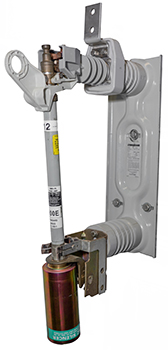
Non-Disconnect Style
SM-4Z, SM-5S, and SM-5SS Power Fuses are available in the Non-Disconnect Style
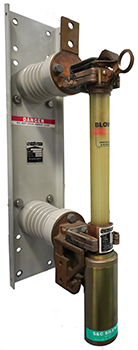
| Curve Type | kV Nom. Ratings | Fuse Type | TCC Number | Excel | |
|---|---|---|---|---|---|
| Minimum Melting | All | SMU-20 and SMU-40 | TCC Number 153-2 | EXCEL | |
| Total Clearing | 4.8 | SMU-40 | TCC Number 153-2-1-4 | EXCEL | |
| Total Clearing | 14.4 | SMU-20 | TCC Number 153-2-2 | EXCEL | |
| Total Clearing | 14.4 and 25 | SMU-40 | TCC Number 153-2-3-4 | EXCEL | |
| Total Clearing | 25 and 34.5 | SMU-20 | TCC Number 153-2-4 | EXCEL |
| Curve Type | kV Nom. Ratings | Fuse Type | TCC Number | Excel | |
|---|---|---|---|---|---|
| Minimum Melting | All | SMU-20 and SMU-40 | TCC Number 115-2 | EXCEL | |
| Total Clearing | 4.8 through 25 | SMU-40 | TCC Number 115-2-3-4 | EXCEL | |
| Total Clearing | 14.4 through 34.5 | SMU-20 | TCC Number 115-2-4 | EXCEL |
| Curve Type | kV Nom. Ratings | Fuse Type | TCC Number | Excel | |
|---|---|---|---|---|---|
| Minimum Melting | All | SMU-20 and SMU-40 | TCC Number 119-2 | EXCEL | |
| Total Clearing | 4.8 | SMU-40 | TCC Number 119-2-1-4 | EXCEL | |
| Total Clearing | 14.4 | SMU-20 | TCC Number 119-2-2 | EXCEL | |
| Total Clearing | 14.4 and 25 | SMU-40 | TCC Number 119-2-3-4 | EXCEL | |
| Total Clearing | 25 and 34.5 | SMU-20 | TCC Number 119-2-4 | EXCEL |
| Curve Type | kV Nom. Ratings | Fuse Type | TCC Number | Excel | |
|---|---|---|---|---|---|
| Minimum Melting | All | SMU-20 | TCC Number 176-2 | EXCEL | |
| Total Clearing | 14.4 | SMU-20 | TCC Number 176-2-2 | EXCEL | |
| Total Clearing | 25 and 34.5 | SMU-20 | TCC Number 176-2-4 | EXCEL |
| Curve Type | kV Nom. Ratings | Fuse Type | TCC Number | Excel | |
|---|---|---|---|---|---|
| Minimum Melting | All | SMU-20 | TCC Number 165-2 | EXCEL | |
| Total Clearing | 14.4 | SMU-20 | TCC Number 165-2-2 | EXCEL | |
| Total Clearing | 25 and 34.5 | SMU-20 | TCC Number 165-2-4 | EXCEL |
| Curve Type | kV Nom. Ratings | Fuse Type | TCC Number | Excel | |
|---|---|---|---|---|---|
| Minimum Melting | All | SMU-20 | TCC Number 175-2 | EXCEL | |
| Total Clearing | 14.4 | SMU-20 | TCC Number 175-2-2 | EXCEL | |
| Total Clearing | 25 and 34.5 | SMU-20 | TCC Number 175-2-4 | EXCEL |
| Curve Type | kV Nom. Ratings | Fuse Type | TCC Number | Excel | |
|---|---|---|---|---|---|
| Minimum Melting | All | SM-4 and SM-5 | TCC Number 153-4 | EXCEL | |
| Total Clearing | 4.6 through 14.4 | SM-4 and SM-5 | TCC Number 153-4-2 | EXCEL | |
| Total Clearing | 25 and 34.5 | SM-4 and SM-5 | TCC Number 153-4-4 | EXCEL |
| Curve Type | kV Nom. Ratings | Fuse Type | TCC Number | Excel | |
|---|---|---|---|---|---|
| Minimum Melting | All | SM-4 and SM-5 | TCC Number 115-4 | EXCEL | |
| Total Clearing | 4.6 through 34.5 | SM-4 and SM-5 | TCC Number 115-4-4 | EXCEL |
| Curve Type | kV Nom. Ratings | Fuse Type | TCC Number | Excel | |
|---|---|---|---|---|---|
| Minimum Melting | All | SM-4 and SM-5 | TCC Number 119-4 | EXCEL | |
| Total Clearing | 4.6 through 14.4 | SM-4 and SM-5 | TCC Number 119-4-2 | EXCEL | |
| Total Clearing | 25 and 34.5 | SM-4 and SM-5 | TCC Number 119-4-4 | EXCEL |
| Curve Type | kV Nom. Ratings | Fuse Type | TCC Number | Excel | |
|---|---|---|---|---|---|
| Minimum Melting | All | SM-4 | TCC Number 179-4 | EXCEL | |
| Total Clearing | 14.4 | SM-4 | TCC Number 179-4-2 | EXCEL |
| Curve Type | kV Nom. Ratings | Fuse Type | TCC Number | Excel | |
|---|---|---|---|---|---|
| Minimum Melting | All | SM-5 | TCC Number 173-4 | EXCEL | |
| Total Clearing | 7.2 and 14.4 | SM-5 | TCC Number 173-4-2 | EXCEL |
| Curve Type | kV Nom. Ratings | Fuse Type | TCC Number | Excel | |
|---|---|---|---|---|---|
| Minimum Melting | All | SM-5 | TCC Number 174-4 | EXCEL | |
| Total Clearing | 14.4 | SM-5 | TCC Number 174-4-2 | EXCEL |
